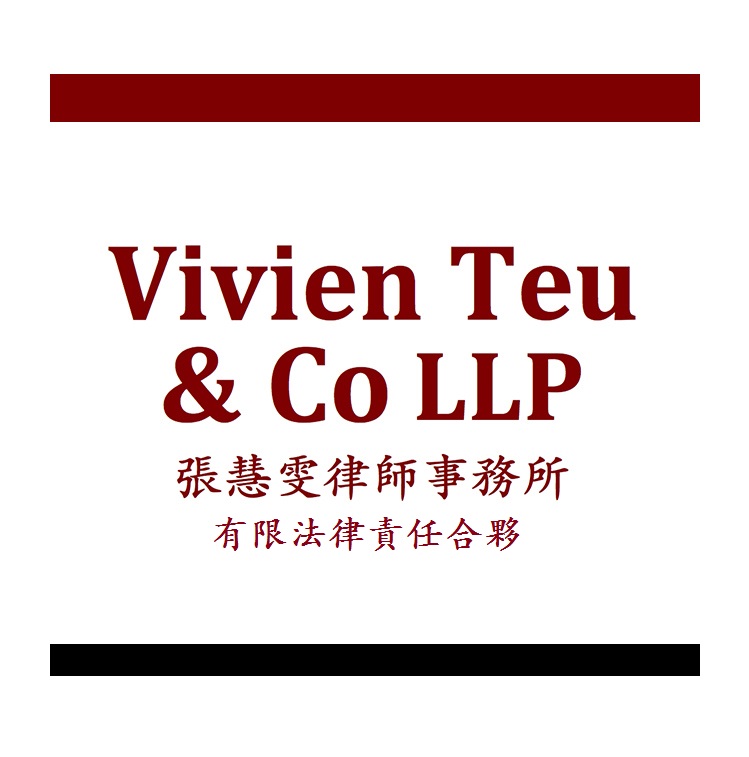23 April, 2019
Background
An evolutionary force has built momentum in recent years within the global investment management industry and investors community – a greater focus on the power of capital for good and purpose. Beyond “green investing” to fight climate change, it goes from sustainable investing to ethical or impact investing, encompassing objectives to embrace broader responsibilities that take into account environmental, social and corporate governance (ESG) factors.
In the broader context, the investment industry and capital markets are responding to governmental policies and investors demand for capital allocation with these objectives.
Yet, there are varying degrees and approaches to addressing ESG factors, with limited regulatory requirements that provide specific framework. What counts as green, or what specific environmental, social or governance issues are being addressed, and how?
With an increase in the offering of investment products or services with proposed green or ESG investment objectives or policies, there is an issue of clarity or sufficiency of disclosures. This makes it difficult for investors to compare and contrast the available choices of products – what exactly are the products purported to be or to what extent are the investment strategies or investment portfolios actually “green” or “ESG” compliant.
Global movement
Tackling climate challenges and having capital markets being ESG responsible are now seen as a global necessity and growing movement. The Network of Central Banks and Supervisors for Greening the Financial System (NGFS1), now with 30 members and 5 observers over 5 continents, was established in December 2017 with the objective to enhance the role of the financial system to manage risks and mobilize capital for green and low-carbon investments. Global markets are having increasing consensus on the need to recognize risks that climate issues pose to corporations and the global economy, which may translate into financial or economic risks that are not yet properly addressed or adequately disclosed.
There is also the overarching framework of the United Nations (UN) Guiding Principles of Business & Human Rights adopted in 2011 on the responsibilities of governments and corporations, further to which countries should be committed to introducing national action plans to put principles into action2. While still a work-in-progress, there are developing domestic and international law and regulations on the responsibility of the state to protect human rights, corporate responsibility to respect human rights, and for providing access to remedy. Linking the challenges of climate change and human rights, the UN Intergovernmental Panel on Climate Change in 2014 identified the severity of
climate change and extreme weather events to be direct and indirect threats to the full and effective enjoyment of a range of human rights.
Overall, it is for the sustainable development of our planet and our human economic activities and livelihoods. The 2015 UN Sustainable Development Goals (SDG) set the blueprint and target of 2030 to achieve a better and more sustainable future for all that address issues relating to poverty, inequality, climate, environmental degradation, prosperity, peace and justice, although the SDG are not binding legal requirements.
Both public and private capital are being put to work towards these goals, and certain sovereign wealth funds as well as institutional investors are already leading the efforts or setting examples of making deliberate decisions toward allocating capital aligned with the SDG or sustainable finance3.
How has Hong Kong responded?
As a major international financial centre and one of the largest capital markets by size and depth, it cannot be over-emphasized that Hong Kong must play its part.
Since 2016, Hong Kong has pushed forth efforts to become a regional green finance hub, including for Hong Kong to be a centre for issuing green bonds. It follows China’s lead in some respects, and China’s central bank the People’s Bank of China (PBOC) is a founding member of the NGFS. Hong Kong is a significant capital raising hub for its stock exchange, with many Mainland businesses listed on the Hong Kong Stock Exchange, and is expected to continue as a key market where Mainland companies seek to raise international capital. Hong Kong is also further expanding as a well-established international and regional funds and investment management centre.
In September 2018, the Hong Kong Securities & Futures Commission (SFC) published a paper – “Strategic Framework for Green Finance”. With specific references to green finance and investing with ESG factors4, key stated priorities include enhancing listed companies’ disclosures, currently a “comply or explain” requirement vis-a-vis the ESG Guide in the Listing Rules of Hong Kong Exchange, and potentially to mandate (environmental) disclosures. SFC would also examine the integration of ESG factors by investment managers in investment processes, and on developing appropriate, consistent disclosures and labelling guidelines for green or ESG investment products. There is commitment to develop green finance in Hong Kong, and while this is relevant for ESG, the apparent emphasis is on the “E”.
Circular on Green or ESG funds
The SFC has since conducted a closer review of the disclosures of green or ESG products where there is an expressed investment focus on climate, green, environmental or sustainable development, and found that disclosures standard varies widely. With this finding, SFC issued its Circular to management companies of SFC-authorised unit trusts and mutual funds to address “Green” or “ESG” funds (Circular). As stated in the Circular of 11 April 2019, the aim is to enhance disclosure comparability between similar types of SFC-authorised Green or ESG funds and their transparency and visibility in order to facilitate investors making informed investment decisions in this evolving investment areas.
What is a “Green” or “ESG” fund?
- According to the Circular, Green or ESG funds may incorporate one or more of a globally recognized green or ESG criteria or principles as their investment focus and reflect this in their name and investment objective or strategy.
- The SFC refers to a list5 of globally recognised green or ESG criteria or principles that may be considered by a Green or ESG Fund, although it is stated that the list is not intended to be exhaustive and others may be considered on a case-by-case basis.
“Green” or “ESG” Investment Strategies
- Green or ESG funds may adopt investment strategies such as screening (positive or negative screening), thematic, ESG integration and impact investing.
- To be a Green or ESG fund, it is expected that the fund would invest primarily in investments that reflect the particular green or ESG focus of the fund. A fund adopting screening strategies or thematic investment strategies should demonstrate that at least 70% of its total net asset value is invested in securities or other investments reflecting the stated green or ESG related investment focus. For other strategies, it would be expected to demonstrate to the SFC, on a case-by-case basis, how the fund could comply with this requirement.
Self-confirmation or third-party certification?
- Managers of Green or ESG funds may submit self-confirmations or obtain third-party certification or fund label. There is no prescribed list of third-party certification or label agency, but such party must be independent of the manager and the scheme (or their associated entities).
- The SFC expects that the third party certification or labelling process should involve review of the fund’s investment selection and ongoing monitoring process on the green or ESG investment focus of the fund and its adherence to globally recognized green or ESG criteria or principles.
Disclosure Requirements
- As a general principle, the offering documents should contain information necessary for investors to make an informed judgement of the investment.
- The Circular outlines the minimum disclosure requirements (and risk disclosures) that the SFC expects managers to incorporate in the offering documents (including in the product key fact statements (KFS)) of Green or ESG funds.
- Besides disclosure on the investment focus and strategies, managers are expected to disclose the investment selection process and criteria for assessing underlying investments, its ESG analysis or evaluation methodology, reference to any ESG ratings or third party certifications or labels, constituents of any green or ESG-related indices or any reference benchmark, or the carbon footprint, environmental impact, green or ESG-related activities of issuer companies, and whether an exclusion policy is adopted.
Existing SFC-authorised funds or new funds seeking authorisation are expected to provide to the SFC relevant confirmations of compliance and (where relevant) third party confirmation. The SFC may raise requisitions, and once accepted by the SFC, the SFC would categorise the funds as a Green fund or ESG fund and include such fund within a list to be published by the SFC by end of 2019. Offering documents of relevant funds are expected to be updated by no later than 31 December 2019.
Implications and Next Steps
Given the global nature and broad context that underlies the move of capital towards green or ESG goals, it is a challenging task to seek consistency, comparability and transparency. Admitting that the Circular is an initial step in SFC’s efforts to enhance disclosure standard of green or ESG funds, the SFC will keep in view local and international market and regulatory developments, and may provide further guidance or impose additional requirements for green or ESG funds, where appropriate.
As one would observe, the requirements of the SFC as set out in the Circular are neither prescriptive, narrow nor final in what may be accepted as green or ESG investments.
The emphasis is actually on appropriate and adequate disclosures, so that it would be clear on the green or ESG investment policies or strategies that are being pursued and investors would be properly informed. A key regulatory objective of the SFC has always been investor protection, and investors with the desire to put their investment to specific purposes would have better transparency on the policies or strategies to meet those objectives.
We consider that the Circular would also serve to require and obligate investment managers offering investment products with an expressed green or ESG focus or who intend to do so to carefully consider whether their fund would and is able to comply within the SFC’s expected framework for Green or ESG funds and become designated as such.
Whether a manager would seek to obtain a third party certification or fund labeling or would rely on its self-confirmation, it is certainly expected to have a proper and robust investment selection process and assessment criteria in line with its stated investment focus and green or ESG principles.
The SFC has also launched an online survey requesting all Hong Kong licensed asset managers to respond by 23 April 2019, in order to gain a better understanding of whether and how asset managers are integrating environmental and climate change-related factors into their investment and risk management processes, post-investment ownership practices and disclosures, and also to gauge expectations for listed companies’ environmental, social and governance disclosures. SFC would consider survey results along with industry engagement for introducing appropriate policies, codes and guidance.
It is hoped that the Circular as well as other regulatory policies or guidance that SFC shall issue going forward would go towards supporting and encouraging a considered and sustainable development of green or ESG investment products and approaches. The investment industry as institutional investors and as agents of the investing public has an important and necessary role to lead broader impact and further engagement for corporate responsibilities to act in line with green and ESG principles.
For further information, please contact:
Vivien Teu, Managing Partner, Vivien Teu & Co LLP
vivien.teu@vteu.co
1 Founding members of the NGFS were central banks of China, England, France, Germany, Netherlands, Singapore, Mexico and Sweden.
2 Currently 24 countries have implemented National Action Plans, with a similar number of countries having plans in progress, including 5 countries from Asia – India, Japan, Malaysia, Philippines and Thailand.
3 More than 1700 asset managers or owners (and service providers) with over US$68 trillion assets under management are signatories to the UN Principles for Responsible Investment (UN PRI).
4 Refer to our previous update: (http://www.vteu.co/2018/09/22/hong-kong-sfc-increasing-focus-on-green-finance-and- esg/)
5 List of green or ESG criteria or principles SFC currently refers to: UN Sustainable Development Goals, UN Global Compact Principles, Common Principles for Climate Mitigation Finance Tracking, Green Bond Principles of International Capital Market Association, or Climate Bonds Taxonomy of the Climate Bonds Initiative.

.jpg)





